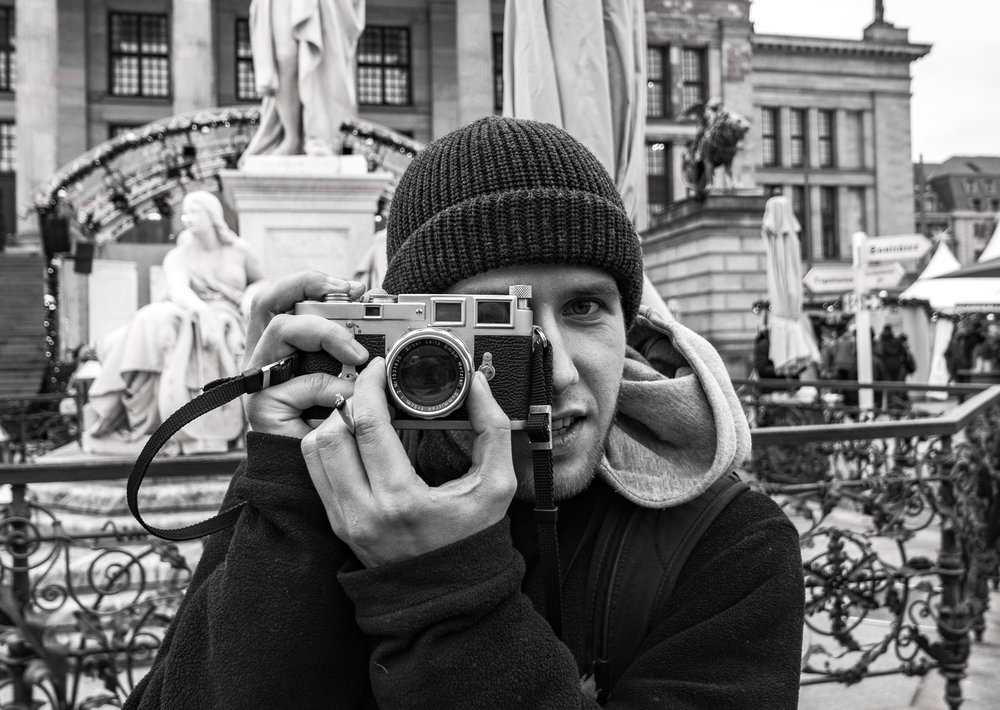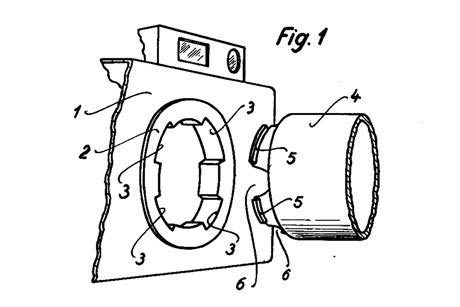The Leica M3, the first camera to feature the new-familiar M-mount, was launched at Photokina in September, 1954. So, you might think, another few years to go until the platinum anniversary. But not so. I was interested to read in Leica Rumors that the M-mount is seventy this month, three days ago on the tenth, as it happens.

On that day, the gloriously named Hugo Wehrenpfennig filed at the German patent office for the new mount on behalf of Ernst Leitz GmbH. Herr W, who is credited as the inventor, launched his plan for a “bajonettvorrichtung für die lösbare Verbindung zweier Kamerateile”1 seventy years ago and it was published on 23 October 1952, two years before the M3 arrived.

Here is the Leica Rumors article in full and you might also like to read the original source of information in a longer overview of Leica-M lenses at Apotelyt.com in 2017. According to Apotelyt:
The bayonet has a diameter of 44mm and a relatively short flange-focal distance of 27.8mm, so that many other lenses, such as Leica R or LTM, can be mounted on an M-mount camera via corresponding adapters. The M-mount features four tabs and a connector that transmits the focusing distance of the lens to the optical rangefinder in the camera.
The newer version of the M-mount that was introduced with the Leica M8 also has six-bit markings on the flange that provide the camera with information on the lens that is being attached, so as to enable digital corrections of lens-specific imaging flaws.
- Bayonet device for the detachable connection between two camera parts ↩

There is also a IIIg with a bayonet Mount in the book by Lars, but by the time the IIIg came along the M3 was already a massive success. The LTM Mount has some advantages over the M mount as regards mounting some accessories, but I won’t go into that here. Then there is whole corpus of knowledge about LTM/M adaptors which could fill a book. The M Mount has been around even longer than the Nikon F Mount and shows no sign of disappearing.
William
Norman Goldberg, famous american Leica phototechnologist, made several inventions and accessories for Leica. He converted a IIIg to M-Bayonet.
Someone converted LTM Canon 7 Rangefinder to M-Bayonet. A lot of work because you have to enlarge the camera lens hole too. Me too studied a lot about this conversion but finally I arrived at the conclusion that it’s a style exercise not economically convenient.
https://www.rangefinderforum.com/forums/showthread.php?t=163430
Pit
thanks Mike and Dave.
Just in those days I’m playing with an old 1936 homemade 78rpm records with my father and brothers voices when they were children. Homemade records were made of an aluminium disc covered with furniture shellac to be engraved with a phonoengraver, the contrary of a turntable. But very delicate and degraded due to the shellac.
Dear Pit,
At funfairs in the 1950s and ’60s – and sometimes at train stations, too, here in England – there were little kiosks, or booths, where you could put a coin in the slot, step inside, and record your voice on a disc for about 3 minutes. (A bit like ‘Photo-Me’ booths.) Instead of aluminium and shellac, the discs were, I seem to remember (I did record one or two!) floppy vinyl, I think, and were cut live, in the back of the booth, by a diamond stylus.
For two friends’ wedding (around 1966) several of us recorded about eight or nine songs (I did the recording) and sent the tape to a company in Lancaster which cut a ‘proper’ 33⅓ normal thickness vinyl LP.
[P.S. I remember that BBC studios in Manchester, in the 50s and 60s, used record players with horizontally tracking pickups (‘tone arms’) so that the stylus was always at the same 90 degree angle to the groove throughout the duration of the disc, but I never saw those anywhere else. BBC studios in the 80s used normal ‘angled’ tone arms, just like everyone else did, or does.]
I used to have 78(rpm) BBC sound effects records ..which I remembered after reading your comments Pit and Philip about the “interrupted screw” Witness and LTM lens mount: the discs had two spiral grooves on each side; one starting at the outer edge – like most records – and the other starting at the inside next to the label, and the grooves criss-crossed each other all across the disc.
You could play them starting at the outer edge – as normal – or outwards, starting at the inner end of the groove ..both grooves had the same sound, such as railway wheels clickety-clacking, as for Sherlock Holmes’ and Dr Watson’s trips by train to Devon, say.
The reason for starting at the inside was that the sound degrades as you reach the centre of the disc when played normally (..as – incredibly – the centre of the record turns slower than the outer edge..) so if listeners heard the same effect for several minutes, they’d notice it getting poorer, but if you played the effect from the centre outwards, people wouldn’t notice any reducing quality, because it improved the longer it played!
Sorry to be a bit off-topic, but that “interrupted thread” just reminded me. (I won’t mention the “intermittent movement” of ciné projectors, as that’d be even more off-off-topic!)
The Ilford Witness used a broken thread on body and lens for the same effect.
Cheers
Philip
Before the introduction of M cameras, many LTM cameras were modified in an ibrid bayonet/screw Mount.
On the camera threaded flange mount were eliminated 3 portion of thread opposed of 120° with a milling machine. The same on the lens threaded barrel. Now you can insert the lens, rotates and lock like a bayonet system. I meet this modification in LTM cameras for professional use. Very smart!
Pit, you have just reminded me that I wrote an article on the Ilford Witness in 2017 in which I covered the “interrupter screw thread.”
I’d forgotten, but here is a link if anyone is interested.
https://www.macfilos.com/2017/06/13/2017-6-11-ilford-witness-how-bolton-almost-became-the-wetzlar-of-england/
Regarding the M-mount, I’d contest the assertion on that ‘Apotelyt’ website that “..the two Tri-Elmars (16-18-21mm and 28-35-50mm) make it possible to cover several focal length in one lens, and on the Leica M (Type 240) and newer cameras, it is possible to use them as continuous zooms in Live View mode” (my italics).
I can’t check the Wide-Angle Tri-Elmar – as you presently have it Mike, so you might like to try it – but the Medium-Angle-Tri-Elmar CANNOT be used as a “continuous zoom” for two reasons: firstly it’s a 28-50-35mm (in that order!), so you can’t continuously zoom from 28, through 35 to 50mm; it jumps from one wide-angle to 50mm, then back to the other wide angle; and secondly (like the Konica 21-35mm dual range w/a) it goes out-of-focus between those set focal lengths, and so must be refocused at in-between focal lengths.
(Just thought I’d mention that you can’t believe everything you read on ‘Apotelyt’!)
Leica experimented with a bayonet mount in the early to mid 1930s. Mike, if you have the book Museum Leica by Lars Netopil you will find a thumbnail photo on the middle right of page 83 and then you can follow that to the full plate. In writing a recent article on Fake and Copy Leicas I could find no record of Leica or Leitz ever having pursued a claim for breach of copyright.
William